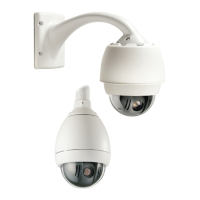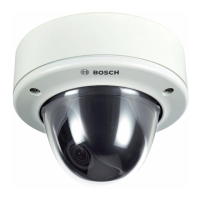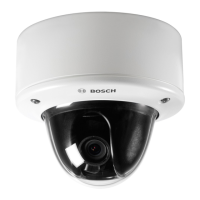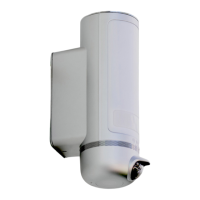76 en | Connection AUTODOME IP starlight 7000 HD
2016-07 | 1.0 | F.01U.283.679 Operation Manual Bosch Security Systems
15.5 Alarms and Relay Connections
Alarm Inputs
The camera provides seven alarm inputs. Each input can be activated by dry contact devices
such as pressure pads, passive infra-red detectors, door contacts, and similar devices. The
table below summarizes the size and distance wires.
Wire Size Maximum Distance
AWG mm feet meters
22 0.644 500 152.4
18 1.024 800 243.8
Tab.15.5: Alarm wire guide
You wire alarms either Normally Open (N.O.) or Normally Closed (N.C.), and must program the
alarm inputs N.O. (the default) or N.C. through the page Configuration.
The camera incorporates two types of alarms: Non-supervised and Supervised. In addition to
transmitting an alarm condition, a supervised alarm also transmits a tamper condition.
Depending on how the alarm is configured, a short or a break in the alarm’s circuit can trigger
the tamper signal.
Configuring Supervised Alarms (inputs 1 and 2)
To configure Alarm 1 or 2 (pin 5 or 6) for supervision, you must install a 2.2 K end-of-line
resistor in the circuit. Then, you program the alarms, through Configuration, to either
Normally Open (N.O.) or Normally Closed (N.C.).
Notice!
Only Alarms 1 and 2 (pins 5 or 6) can be configured for supervision. Once a supervised alarm
is programmed, it does not need to be enabled to indicate a tamper condition.
Configuring a Normally Open Supervised Alarm
1. Install a 2.2 K end-of-line resistor in the alarm circuit.
2. Connect the alarm wires to input 1 or 2 (pin 5 or 6) and to the ground (pin 7) at the
camera.
Figure15.46: N.O.S. - Normally Open Supervised Connections
1 Dry Contact 3 Dome Connector
2 Alarm 1 or 2 only (Pin 5 or 6) 4 Ground (Pin 7)
3. From Configuration, select Interfaces > Alarm Inputs, select the number of the Alarm
input and finally, select N.O. See the table below for contact and condition details.
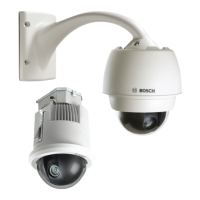
